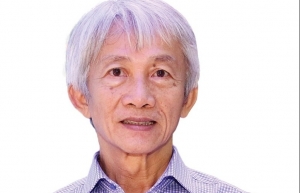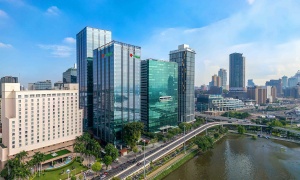Vietnam to create a distinct IFC ecosystem
 |
| Vietnam to create a distinct IFC ecosystem, illustration photo/ Source: freepik.com |
In the final week of July, the Ministry of Planning and Investment (MPI) organised two working sessions with international organisations and representatives from various ministries, sectors, and localities to discuss a project on developing regional and international financial centres (IFCs) in Vietnam.
The MPI has been assigned as the standing body of the National Steering Committee for the Construction of Regional and International Financial Centres.
During the sessions, the MPI presented the draft project on developing these IFCs in Vietnam. Two other draft projects, one for establishing the Vietnam IFC in Ho Chi Minh City and the other for transforming Danang into a regional financial centre, were also presented to gather feedback from representatives.
City leaders declared that incentive policies were needed to draw in strategic investors who can lead development.
The draft plans emphasise that any financial centre must serve as a playground for global financial investors, with common rules compatible with international practices. This includes operational mechanisms, ecosystem development, and incentive mechanisms, tailored to Vietnam’s conditions and prioritising national interests.
“Vietnam is assessed by international organisations as a bright spot in attracting investment, gradually converging many factors to develop a modern financial market. Additionally, the country’s favourable geographical location, high connectivity, and different time zones with the world’s 21 largest financial centres offer a strategic geo-economic position,” said Nguyen Thi Bich Ngoc, Deputy Minister of Planning and Investment.
“Furthermore, the country has good prospects due to active improvements in the investment and business environment, deep international economic integration, digital economic transformation, and an increasing innovation index. The economy’s scale and financial market development are improving. Thus, Vietnam has a golden opportunity to pull in financial resources shifting from major IFCs such as London, Hong Kong, and Singapore.”
However, the MPI stated that while financial centres are a well-established model in many countries, it is a new and complex issue for Vietnam. Therefore, the choice of model and method for constructing such centre needs to be based on a selective learning from international experiences.
Establishing an IFC has garnered significant attention from the government. At a discussion during January’s World Economic Forum in Switzerland, Prime Minister Pham Minh Chinh asked leading global banks and financial investment funds to assist Vietnam in building an IFC.
“We expect foreign partners to help Vietnam improve its national credit rating and enhance standards in accounting, auditing, and financial reporting, providing a crucial foundation for developing an IFC in the future,” said PM Chinh.
The implementation schedule for the IFC will unfold in three periods. From 2025 to 2030, Vietnam will prepare the basic conditions for the centre’s formation. Policymakers will review and integrate financial centre development into government strategies, planning, programmes, and action plans, and those of the localities where the centre is established.
The period from 2031 to 2035 will see the application of pilot policies for the establishment of the financial centre, along with infrastructure development. After that, Vietnam will aim to develop the IFC comprehensively, with the goal of becoming a regional financial hub. Additionally, the potential for expanding the financial centre’s area will be studied.
In the upcoming period, the MPI will consolidate feedback and report to the head of the Steering Committee to finalise the draft project, which will then be submitted to the Politburo for consideration and approval. The MPI will also lead and coordinate with relevant agencies to develop a draft resolution on a specific mechanism for building and developing the IFC.
The Ministry of Finance is assigned to lead and coordinate with relevant agencies to enhance and implement policies and legal frameworks for tax, the stock market, insurance, and customs for the financial centre’s activities. It will also issue a fintech testing management framework for the securities and insurance sectors and continue developing the capital market and upgrading the Vietnamese stock market, creating better conditions for establishing the financial centre.
 | Striving to become an international financial centre After many years of waiting, Thu Thiem 2 Bridge was opened to the public in late April. Also at the same time, the final details of the scheme for the development of Ho Chi Minh City into an international financial centre are being fixed before the scheme can be submitted to Politburo for consideration and approval. |
 | Riverfront Financial Centre a new landmark in Ho Chi Minh City Riverfront Financial Centre has opened in Ho Chi Minh City, becoming the most modern office building in the southern business hub. |
What the stars mean:
★ Poor ★ ★ Promising ★★★ Good ★★★★ Very good ★★★★★ Exceptional
Related Contents
Latest News
More News
- Vietnam eases policy approval requirements, simplifies foreign and outbound investments (December 11, 2025 | 17:53)
- Vietnam masters core technologies of automobile value chain (December 11, 2025 | 17:46)
- VAL opens second line of largest soybean crushing complex in Southeast Asia (December 11, 2025 | 12:08)
- Vietnam urged to shore up supply-chain resilience amid global uncertainty (December 10, 2025 | 18:47)
- Unpacking new momentum in Vietnam’s M&A market (December 10, 2025 | 09:59)
- Forum honours outstanding M&A deals, strategies, and advisory firms (December 09, 2025 | 18:22)
- Vietnam enters defining phase of M&A growth (December 09, 2025 | 17:00)
- Landscape strong for domestic acquisitions (December 09, 2025 | 15:34)
- FDI in Vietnam jumps on additional capital and share purchases (December 09, 2025 | 13:56)
- THACO and Hyundai Rotem sign strategic railway partnership (December 09, 2025 | 12:14)

 Tag:
Tag:



















 Mobile Version
Mobile Version